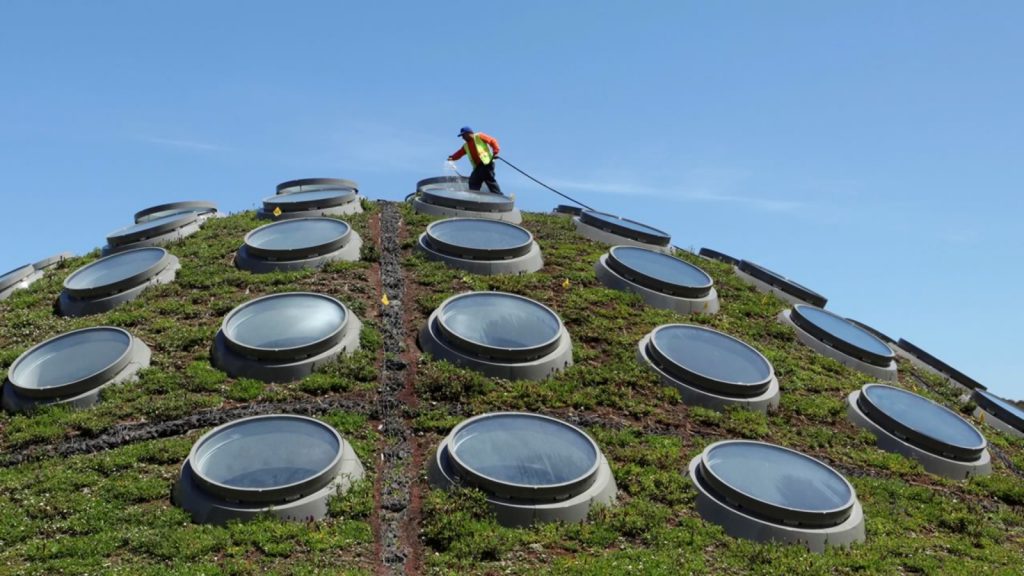It has been said San Francisco is forty-nine square miles surrounded by reality. Fleeing Michigan snows for a week in San Francisco leads to feeling the otherworldliness. One flight and everything changes.
In San Francisco, underneath a series of hills reminiscent of Hobbit holes, is the California Academy of Sciences. The hills reflect the structures below, such as the planetarium. The overall field forms a living roof which keeps “interior temperatures about 10 degrees cooler than a standard roof and reducing low frequency noise by 40 decibels. It also decreases the urban heat island effect, staying about 40 degrees cooler than a standard roof.” This according to the California Academy of Sciences press release from 2007.
Renzo Piano designed building. His starting point was a question that’s delightful in his lateral thinking: “what if we were to lift up a piece of the park and put a building underneath?” In the California Academy of Sciences building and throughout Piano’s work, he returns again and again to themes of culture and change.
“The world keeps changing,” Renzo Piano said on the TED stage. “Changes are difficult to swallow by people. And architecture is a mirror of those changes. Architecture is the built expression of those changes. Those changes create adventure. They create adventure, and architecture is adventure.”
There’s a tension when designing a security architecture. The architecture must meet and mirror culture of the organization. The design can’t run contrary to how the organization works. But at the same time, the new controls must facilitate a cultural change towards a more secure way of being. The architecture mirrors while it modifies.
There’s another tension when designing a security architecture. Ongoing change will impact how people perceive and experience security. But at the same time, the security principles and posture must remain unchanged in the face of far ranging organizational change. “Architects give a shape to the change,” Piano once said. The architecture is flexible but stable.
My last trip in the US, before the pandemic, was to San Francisco. Within a month, everything had changed. We are experiencing the greatest migration in human history. A migration from the office to the home, certainly. More significantly, a migration from the physical to the digital. We now live in 1440 square pixels surrounded by reality.
Security architects must meet the wave of this change while holding steadfast to our security principles.

This article is part of a series on designing cyber security capabilities. To see other articles in the series, including a full list of design principles, click here.
Posted by